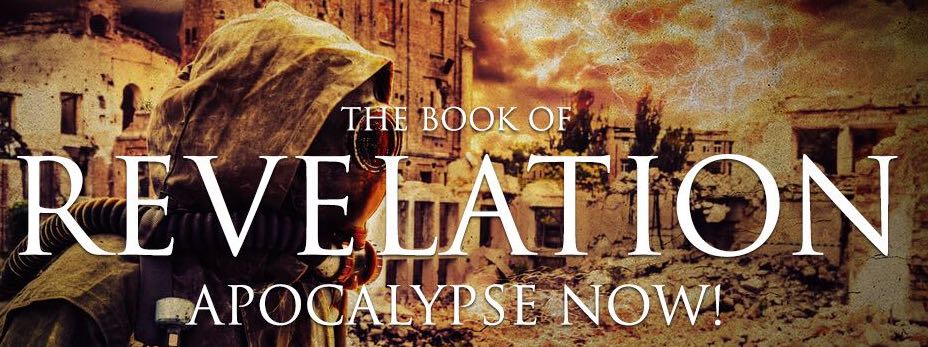Interpreting the Book of Revelation: Part 2

Interpreting the Book of Revelation: Part 2
The Seven Cycles
One of the difficulties with the book of Revelation is that there are so many different interpretations. Some say that most of what John wrote was fulfilled in the first century AD (Preterist), some argue that the primary focus is the period just before Christ’s second coming (Futurist), while others believe that Revelation gives us a straight chronological history between Christ’s first and second coming (Historicist).
Personally, I believe that Revelation is cyclical (Idealist). Each cycle covers either the whole, or an aspect, of the period between Christ’s first coming and His second coming. Think of the soccer world cup. The ball is played out to Neymar who comes within a meter of an opposition player and falls over in agony. We then see the same event from five different angles. The ref, not wanting to make a mistake, asks for the VAR. The VAR zooms in on a specific section of the event, Neymar’s foot. We see that a nasty blade of grass caught Neymar’s boot and sent him hurtling in anguish leaving us all wondering how he survived the pain of all those tattoos. In the same way the Lord shows John different perspectives on the same period of history but sometimes He zooms in on specific aspects.
There are three primary reasons why I hold to the cyclical view. They are the exegetical, numerical, and stylistic.
The Exegetical Argument
The exegetical argument must always be our first port of call if we want to understand the text. I grew up with a futurist understanding of Revelation but even as a young Christian I remember reading Revelation and thinking ‘this sounds like the end of the world’ and I would only be in chapter 6! Still 15 more chapters until the ‘official’ end. Perhaps you have had the same experience? Well, the cyclical understanding makes sense of the text.
Here are the seven cycles with the passages that describe the end of the world in each cycle:
- Revelation 4:1-8:1, chapter 6:12-17 details the opening of the 6th Seal and the final cries of the damned, “Fall on us and hide us from the face of him who is seated on the throne, and from the wrath of the Lamb, for the great day of their wrath has come, and who can stand?”
- Revelation 8:2-11:19, chapter 11:15-19 declare that the kingdom of the world has become the kingdom of our Lord and that God’s wrath has come and it is time for the dead to be judged. Clearly a reference to the final judgement.
- Revelation 12:1-14:20, chapter 14:14-20, these verses are a clear fulfilment of Jesus’ end time harvest parable in Matthew 13:24-30; 36-43.
- Revelation 15:1-16:21, chapter 16:17-21.
- Revelation 17:1-19:10, in these chapters we have the fall of Babylon and the marriage supper of the Lamb.
- Revelation 19:11-19:21, this short cycle depicts the Lord Jesus as a great warrior destroying the Beast, the False Prophet and all unbelievers. This passage is particularly problematic for those who hold to a premillennial or postmillennial position. Verses 17 through 21 repeatedly emphasise the death of all humans, if Revelation is not cyclical then who will be around to enjoy the millennium?
- Revelation 20:1-21:8, the final cycle introduces us to the new heaven and earth that is free from all unbelievers and Satan who is thrown into the lake of fire.
The Numerical Argument
Even a cursory reading of Revelation will reveal the importance of numbers and especially the number seven. As one commentator notes,
One of the first features of Revelation a reader notices is the use of numbers and their significance. To an amazing degree, the number seven is predominant both explicitly and implicitly. This number should not be taken literally but must be understood as an idea that expresses totality or completeness.[1]
There are seven of each of the following, spirits (1:4; 3:1; 4:5; 5:6), golden lampstands (1:12; 2:1), stars (1:16, 20; 2:1; 3:1), lampstands (1:13, 20; 2:5; 11:4), seals (5:1; 6:1), horns (5:6), eyes (5:6), angels (8:2, 6; 15:1, 6–8; 16:1; 17:1; 21:9), trumpets (8:2, 6), thunder (10:3), crowns (12:3), heads (12:3; 13:1; 17:3, 7, 9), plagues (15:1, 6), bowls (15:7; 16:1), hills (17:9), and kings (17:10). There are seven beatitudes and seven attributes and many more implicit examples of seven.
Sometimes scholars bend over backwards and practice hermeneutical gymnastics to make something fit. In this case, the cycles fall naturally into seven, which fits with the symbolic use of the number seven in the rest of the book. These seven cycles show God’s complete plan for this age.
The Stylistic Argument
Finally, the Stylistic argument. Each biblical author, as with any author, has their own style. The Apostle John had a very unique style. He had a cyclical or spiral style of writing. He would introduce themes and then come back to them over and over again.
His first epistle is the most well-known for this. The three tests, social, moral and theological are reiterated over and over again. Even his Gospel does this. The school I attended was named after St. John and the motto is Lux, Vita, Caritas which means light, life and love. These are the three themes that are repeated throughout the fourth Gospel. So, when we come to the book of Revelation we should expect to see John’s cyclical style and, lo and behold, we do.
The cyclical argument is the one that makes sense of the repeated, global, eschatological, cataclysmic events scattered throughout Revelation. It also continues the symbolic use of the number seven as well as John’s idiosyncratic style of writing.
Michael Rogers
SDG
More in Blog
March 6, 2024
"Daughter, Give me Your Heart" (On Titus 2:5 and Working at Home)January 24, 2021
Leader's Response To Extended LockdownMarch 26, 2020
Don't Waste Your Lockdown!